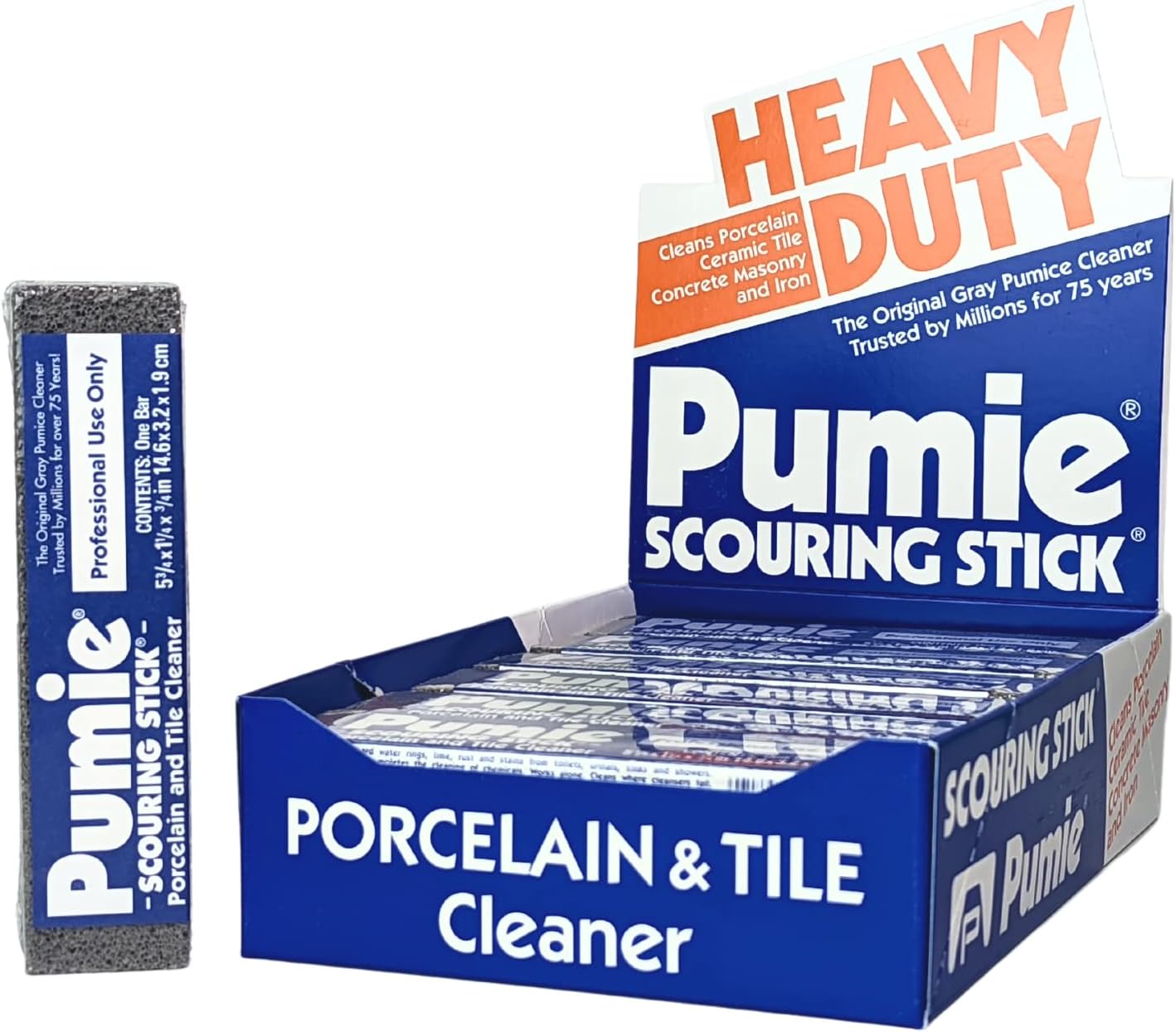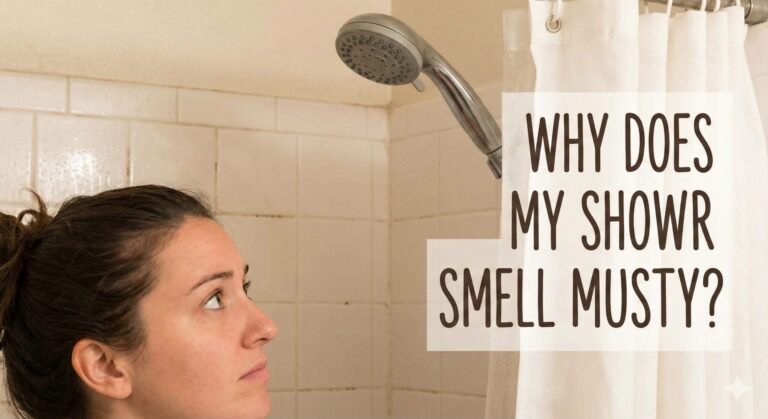How to Remove Rust Stains from Shower Floor: The Ultimate Restoration Guide
There are few things more annoying than walking into your bathroom, ready for a relaxing soak, only to look down and see an ugly, orange-brown ring staining your shower floor. It makes even the cleanest bathroom look neglected. You scrub, you rinse, but the mark remains. If you are wondering why your shower head is leaking or why your floor is stained, the answer is often the same: oxidation.
Rust stains are notoriously stubborn because they aren’t “dirt”—they are a chemical reaction that bonds to the surface of your tub, whether it’s fiberglass, acrylic, or tile. But don’t panic. You don’t need to replace the tub. In this comprehensive guide, we will walk you through how to remove rust stains from a shower floor using everything from lemons to heavy-duty chemistry, restoring your bathroom to its former glory.
🧪 The Science: Why is My Shower Rusting?
Rust (Iron Oxide) occurs when iron, oxygen, and moisture meet. In a shower, this usually happens for two reasons:
- External Objects: A shaving cream can, a razor blade, or a non-stainless steel caddy left on the wet floor.
- Hard Water: Water with high iron content leaves deposits that oxidize over time. This is closely related to hard water stains but much harder to remove.
Pro Tip: If your water smells metallic or tastes like pennies, the rust is coming from your pipes or supply, not just a razor blade.
⚠️ CRITICAL SAFETY WARNING: Never mix rust removers with bleach. Rust removers are typically acidic (contain acids), while bleach is a base. Mixing them creates deadly chlorine gas. Always clean the area thoroughly with water before switching products.
Phase 1: The Natural Solutions (Light Stains)
If the stain is fresh or relatively light, you can likely lift it with pantry staples. These methods are safe for almost all surfaces, including delicate fiberglass.
Safest Option
1. The Lemon & Salt Scrub
The citric acid in lemons attacks the rust, while the salt provides gentle abrasion to lift it from the pores of the shower floor.
- Cut a lemon in half.
- Sprinkle coarse salt directly onto the rust stain.
- Scrub the stain using the lemon half as a sponge.
- Let the juice and salt sit for 1 hour. Rinse.
Best for Flat Surfaces
2. The Vinegar Soak
White distilled vinegar is a mild acid (acetic acid). It works slower than lemon but is easier to use on larger areas.
- Saturate a rag or paper towel in white vinegar.
- Lay the rag directly over the stain.
- Leave it for 2-3 hours (or overnight for stubborn spots).
- Scrub with an old toothbrush.
Note: This is also the first step in cleaning shower grout.
Visual Guide: Quick Rust Removal Hack
Sometimes seeing is believing. Watch this quick demonstration of how acidic cleaners break down rust instantly:
Phase 2: The Heavy Hitters (Deep Stains)
If natural methods fail, the rust has likely penetrated the surface. It is time for commercial-grade solutions.
Use Gloves
3. Iron Out (Chemical Powder)
Iron Out is specifically designed to reverse the chemical oxidation process. It smells potent (like sulfur), so turn on your fan.
Instructions: Sprinkle the powder on the wet stain. It will immediately turn clear or purple as it eats the rust. Scrub and rinse thoroughly.
Porcelain Only
4. Pumice Stone (Mechanical)
A pumice stone essentially “erases” the rust. WARNING: Only use this on porcelain or ceramic tile. Do NOT use on fiberglass, acrylic, or plastic showers as it will scratch them permanently.
Instructions: Wet the stone and the surface. Rub gently. The stone will form a paste that helps polish the stain away.
Best Products for Rust Removal
Based on our testing and user reviews, these are the most effective tools for the job.
Super Iron Out Powder
The Gold Standard. If you have well water or old pipes, you need this in your cabinet. It cleans toilet tanks, softeners, and shower floors instantly.
Check Price on Amazon
Pumie Scouring Stick
For Tile & Porcelain. The chemical-free way to remove rings. Perfect if you are renovating an old bathroom or preparing for a bridal shower guest arrival.
Check Price on Amazon
Bar Keepers Friend (Liquid)
The Gentle Abrasive. Contains oxalic acid. It is safer for fiberglass than pumice stones and works wonders on stainless steel shower heads too.
Check Price on Amazon
Phase 3: Prevention (Stop the Rust)
Once you’ve removed the stain, you must change the conditions that caused it.
1. Elevate Your Storage
The #1 cause of rust rings is a shaving cream can left on the ledge. Switch to aluminum cans or, better yet, get everything off the floor. Installing a drill-free shower caddy is the easiest 5-minute upgrade to protect your tub.
2. Squeegee After Every Use
If hard water is the culprit, removing the water removes the iron deposits. Use the best shower squeegee you can find daily. This also helps with drain maintenance by moving debris along.
3. Check Your Curtains
Metal grommets on cheap curtains can rust and drip onto the tub. Ensure you are using high-quality rust-resistant shower curtains or liners with plastic reinforced headers.
Frequently Asked Questions
Can I use Magic Eraser on rust?
Magic Erasers are micro-abrasive. They work well on surface rust and scuffs, but for deep orange stains caused by iron oxide, you usually need a chemical reaction (acid) rather than just abrasion.
Is bleach good for rust?
No! Bleach sets rust stains. It oxidizes the iron further, making the stain harder to remove. Never use bleach on a rust spot.
How do I remove rust from a shower chair?
If your shower chair legs are rusting, scrub them with aluminum foil dipped in vinegar. The reaction between the foil and vinegar helps polish the chrome. If they are too far gone, replace the chair to prevent staining the floor.
Will a water softener help?
Absolutely. A softener removes the iron before it hits your tap. If you notice your shower pressure is low due to clogging and you have rust, a softener is the long-term fix.
Conclusion
Rust stains on a shower floor are unsightly, but they are not permanent. By using the right acid-based cleaners—whether it’s a lemon from your fridge or Iron Out from the store—you can dissolve the bond between the oxide and your tub.
Remember, prevention is cheaper than cure. Get those metal cans off the floor, squeegee the water away, and if you are planning a renovation, look into rainfall systems and glass doors which are easier to keep dry and rust-free. Now, go banish that orange ring!
Disclaimer: As an Amazon Associate, ShowerBlog earns from qualifying purchases. Always test cleaning products in a small, inconspicuous area first.







